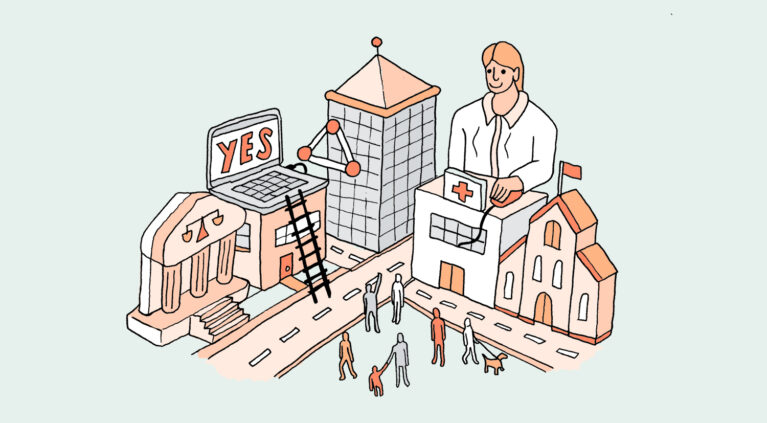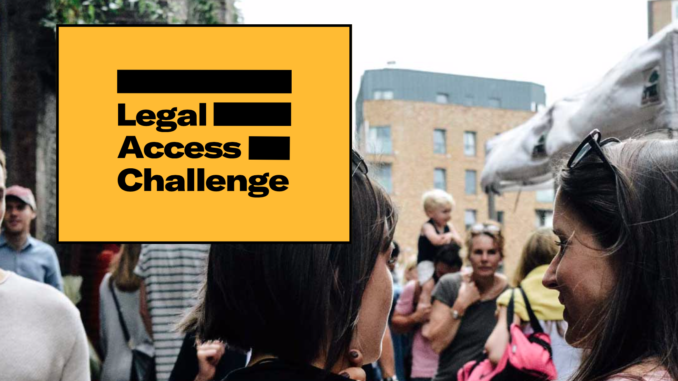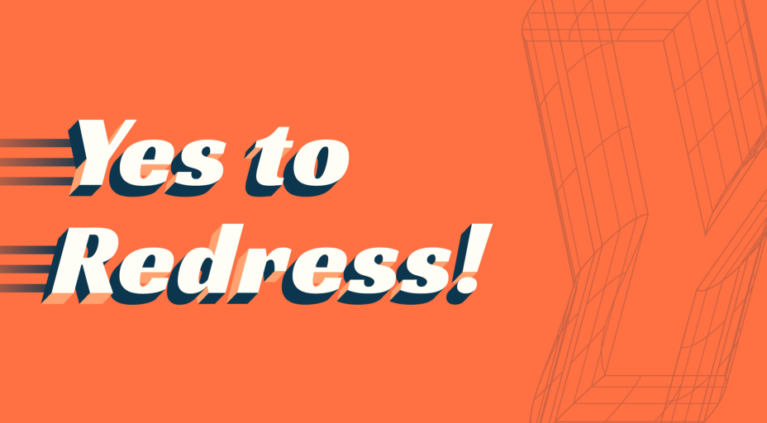The Online Resolution Service: a prototype of a shared platform for online complaints
Richard Pope, part of the founding team at the UK Government Digital Service, worked with Doteveryone to build a prototype Online Resolution Service. Here he explains what we did and how the service aims to help users to report harm they may have experienced online, review their rights, and find out the next steps they could take to resolve it.
As part of Doteveryone’s work on redress, and in partnership with the issue resolution service Resolver, we developed a prototype of a new service to help people report negative or harmful things online to the right places.
The purpose of the prototype is to start to show how a digital service might work and better understand any technical and design constraints. You can try it here.
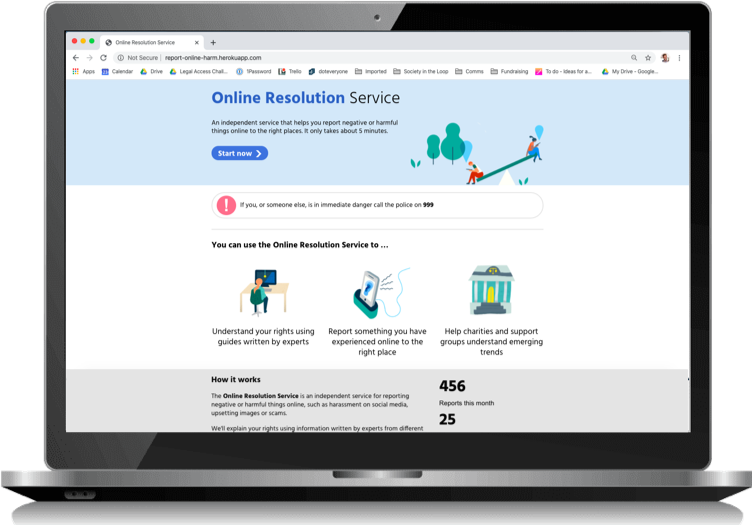
What we did
Based on the learnings from our user research, an exploration of where the gaps in the current redress ecosystem lie, and using insights Resolver has gleaned over the years from operating their service we created a prototype of a new service for the public to resolve online harms – the ‘Online Resolution Service’. This was made possible with funding from Legal Access Challenge – delivered by Nesta Challenges in partnership with the Solicitors Regulation Authority to support innovations making legal services more accessible and affordable to individuals, families and small businesses.
During the development of the prototype, we conducted one-to-one interviews and a roundtable discussion with members of the public to get a better understanding of the type of issues people face online, what a helpful, trustworthy, support service might look like, and what might be the good and bad outcomes from seeking redress.
We also tested the prototype with the public, SMEs who operate digital services and civil society organisations who provide support to people who have experienced various types of harm online to ensure the platform would adequately support all the stakeholders who would make the service a success. In this process we welcomed comments, critiques and feedback on the prototype and iterated based on their advice.
During the research, the DCMS published the Online Harms white paper, so that also played into our thinking. The aim was to try and ensure that whatever we developed aligned with the framework set out in the whitepaper as well as serving the needs of potential users.
Using a ‘learning by making’ approach, we aimed to start to show how a digital service might work and better understand any technical constraints. The prototype was created using a combination of the Flask development framework and the GOV.UK design system.
A simple way to understand your rights and report an issue
The design of the process for redress should be at least as good as people expect from the services that they are seeking redress from. We also know from Resolver’s work that additional questions and steps make it less likely for people to complete the process, so we aimed to respect people’s time and avoid unnecessary questions.
With a few questions, we can identify a user’s issue and give them an overview of their rights and steps they could take to resolve it. The service also signposts additional support from charities and support groups based on the type of issue.
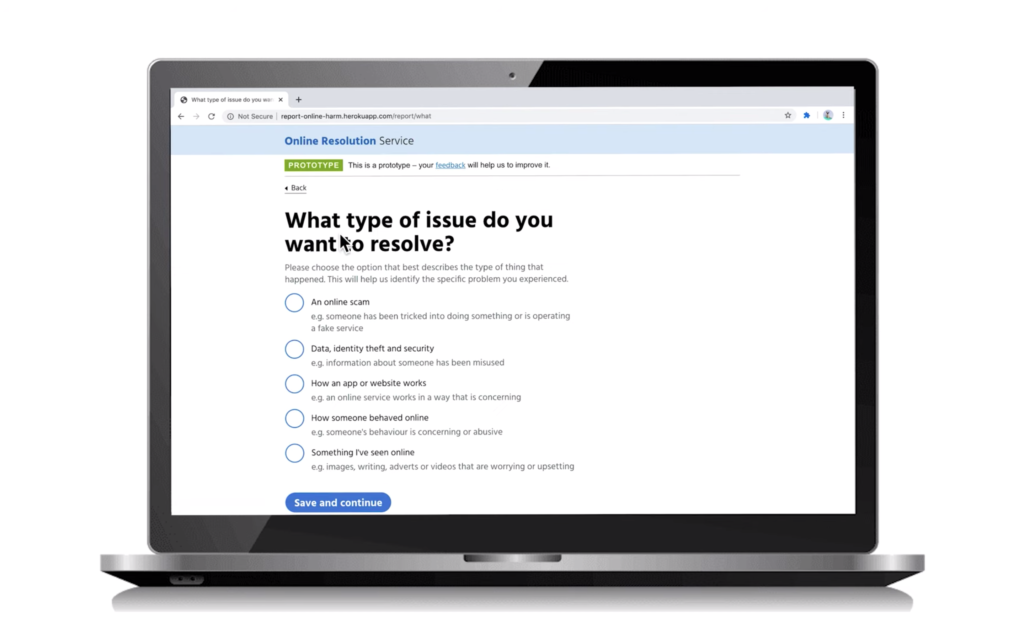
The categories of issue we use to route users to the right information come from a mix of the user research and the whitepaper. Interestingly, our research identified a broader set of harms than covered by the proposed legislation; for example, the use of ‘dark’ design patterns.
If users want to, they can use the Online Resolution Service to report their issue. In most cases, the best action will be to report it to the company responsible for the platform where the issue occurred. But there are some circumstances where the best option is to report it to the police or an existing regulator. The public should not have to understand the internal processes of companies or governments, so with the Online Resolution Service is that it will always route people to the right place.
A user can review their information before the service securely sends it to the right organisation. The Online Resolution Service would then email the user in a few weeks to establish if their issue had been resolved. This will create useful data to understand if issues are being resolved.
A networked response to an internet age problem
Partly in response to the user research and partly in response to the online harms white paper being published, we began to think about the work of civil society organisations, and how the service might work for companies.
Creating an additional place for the public to report issues they are having online could have added to the problem of complexity for the public. So we started thinking about the Online Resolution Service as a multi-stakeholder model. The idea is that civil society organisations would play a role in collaboratively writing content via the GitHub code-sharing platform. They would also receive statistics about the types of issues the public are experiencing that could help them in their role as super-complainants. That way, when someone reports an issue using the Online Resolution Service, it would automatically identify the relevant organisations to notify.
For companies, we know that to be a success, the Online Resolution Service would need to help them easily meet the requirements of new legislation and work with their existing systems. We imagined that the service would have an API that allowed companies to directly integrate with their CRM and configure the type of information that is collected when users report issues about them. (For example, an online game may require a user’s screen name to investigate an issue). Companies could even integrate the Online Resolution Service directly into their apps.
Read more on how government, industry and civil society can help people hold tech companies to account read our Better Redress in the Digital Age report.
